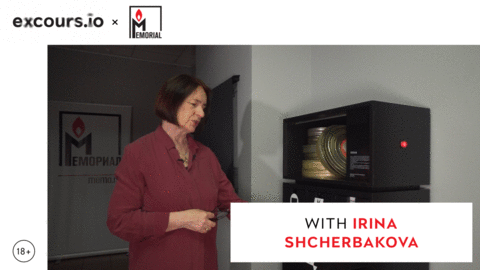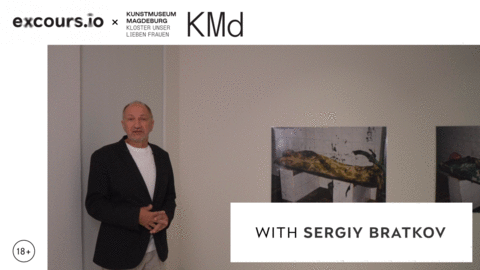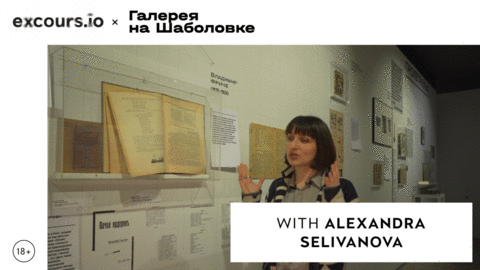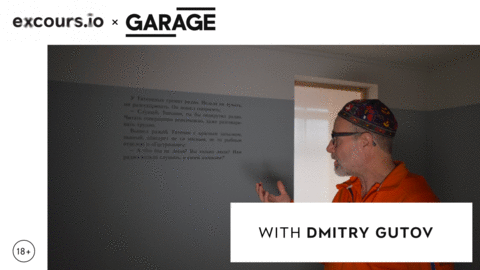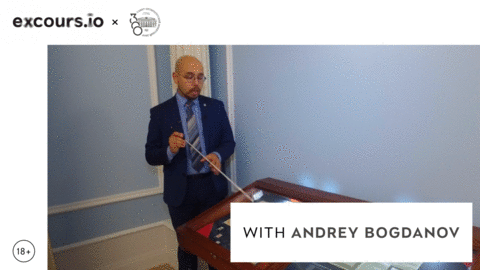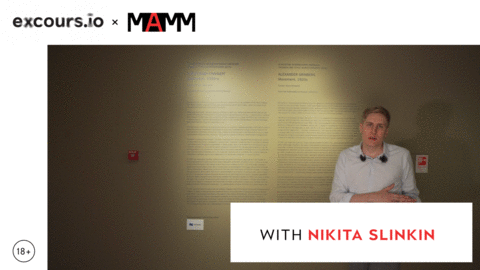“A” fell down, “B” is gone. Glossary of Soviet censorship. Censorship practices in the USSR from the first to the last day of the Soviet authorities
The exhibition serves as a poignant exploration of the pervasive and often absurd censorship that defined Soviet culture over 70 years. By navigating through the Russian alphabet—from the arrest of manuscripts to the Yauza tape recorder and the underground phenomenon of magnitizdat—visitors will uncover a narrative rich in both cruelty and resilience. Each letter unveils stories of meticulous scrutiny and cold repression, highlighting the complex interplay between censorship and state security, while also showcasing remarkable acts of civil defiance against artistic oppression. Enhanced by an array of documents, media, and artifacts, this exhibition invites you to explore the hidden layers of Soviet history and the power of creative expression that endeavored to resist the “red pencils” of authority.
Why should you watch this?
Being familiar with censorship practices is crucial in today’s increasingly polarized society, where issues of free speech and artistic expression are under threat globally. In an era marked by social media scrutiny, fake news, and governmental overreach, understanding the historical context of censorship serves as a stark reminder of the fragility of our rights and liberties. This exhibition resonates with contemporary struggles against misinformation, the suppression of dissent, and the erosion of trust in media and government institutions. By delving into the past, viewers gain insights into the tactics used to stifle voices and the importance of civil resistance. Thus, this tour becomes not just a historical observation, but a call to action, encouraging us to safeguard freedom of expression and advocate for a culture where diverse narratives can flourish without fear of repercussion in our modern landscape.
Victoria Lomasko. Other Russias
Victoria Lomasko’s retrospective at Cartoonmuseum Basel invites viewers to engage deeply with her explorations of Russia’s marginalized communities. This vibrant exhibition showcases her striking murals and drawings, which intricately depict the lives of LGBT activists, sex workers, and migrant laborers. Through her keen observations and bold, expressive style, Lomasko highlights the social injustices and political repression faced by these groups.
Why should you watch this?
Victoria Lomasko’s retrospective at Cartoonmuseum Basel resonates profoundly with today’s global landscape of social justice and human rights. As she illuminates the lives of Russia’s marginalized communities, her work serves as a poignant reminder of the ongoing struggles faced by those often overlooked in society. In a world increasingly confronted with issues of inequality, discrimination, and political repression, Lomasko’s murals and drawings act as both a testament to resilience and a call for advocacy. By capturing the essence of these lived experiences she invites audiences to reflect on the shared responsibility we hold in addressing injustices, igniting conversations that transcend borders. The exhibition serves as both a visual narrative and a call to action, reflecting her long-standing commitment to human rights advocacy. This exhibition underscores the enduring relevance of her work in fostering empathy and inspiring change in our contemporary era.
Sergiy Bratkov. My Brother’s Cats | Immersive Artist Tour
Why should you watch this?
GASTEV. How to Work
Why should you watch this?
If our soup can could speak: Mikhail Lifshitz and the Soviet Sixties
The exhibition is dedicated to one of the most enigmatic, mysterious, and controversial philosophers of the USSR and his famous anthology of polemical texts, The Crisis of Ugliness, which criticizes the art of the 20th century. The retrospective showcases never presented before archive documents, Lifshitz’s texts, and artworks in ten interiors, each representing a milestone in the development of modernism or Lifshitz’s thought: 10 rooms – 10 stages of Soviet history – 10 knots in Lifshitz’s biography. The project is the first large-scale analysis attempt of the tense relationship between so-called progressive art and politics in the XX-XXI century.
Why should you watch this?
This exhibition is a must-see for anyone interested in the deep connections between art, politics, and society. Lifshitz’s The Crisis of Ugliness offers a rare Soviet critique of modernism, challenging Cubism and Pop Art in ways that still resonate today. The exhibition’s exploration of these ideas through archival materials, artworks, and Lifshitz’s own writings sheds light on the complex relationship between avant-garde art and political ideology. In a time of global crisis, Lifshitz’s critiques are more relevant than ever, inviting viewers to reconsider the role of art in shaping social consciousness.
From Kerenkа to Sovznak: Money and Revolution
The exhibition invites viewers into the intricate narrative of Russia’s monetary evolution during a time of upheaval. It explores the profound impact of the 1917 revolution on currency, showcasing how money served as both a reflection and catalyst of societal change. Visitors can discover unique artifacts, many on display for the first time, organized into sections such as “Stable Ruble,” “Money and War,” and “The New Economic Policy.” Highlights include the first “Kerensky” notes, designs featuring Marx, and the initial Soviet currency.
Why should you watch this?
This exhibition offers a fascinating glimpse into a pivotal period in Russian history, exploring how currency reflects the societal upheavals of the early 20th century. It presents unique artifacts, many on public display for the first time, showcasing the evolution of money from the stable ruble to revolutionary currencies. Each section meticulously details the impact of World War I and the 1917 revolution on the monetary system, featuring highlights like the iconic “Kerensky” notes and innovative designs for Soviet currency. This exploration not only reveals the artistic and political significance of currency but also connects past struggles with contemporary economic debates, making it a thought-provoking experience for anyone interested in history, art, or economics.
Alexander Grinberg. Movement. 1920s
Step back into the vibrant world of the 1920s with the Movement. 1920s exhibition, which captures the revolutionary spirit and artistic innovation of this transformative decade. Celebrating a surge of creativity across visual arts, architecture, and design, the exhibit showcases how artists challenged traditional norms and embraced new mediums and themes. Through a carefully curated selection of works and engaging installations, visitors can explore the interplay between art, politics, and society during a time marked by upheaval and change. From the bold geometries of constructivism to the experimental forms of avant-garde movements, Movement. 1920s invites audiences to witness how the decade laid the groundwork for contemporary art, illuminating the ongoing dialogue between past and present in the ever-evolving landscape of visual culture.
Why should you watch this?
This exhibition features a diverse array of works that reflect the pulse of a society in transformation — bold colors, experimental forms, and a celebration of motion that captures the zeitgeist of post-war optimism. Each piece invites the viewer to engage with the revolutionary ideas that shaped modern art, making it a must-see for anyone interested in the interplay between culture and creativity. It demonstrates how artists of the 1920s broke boundaries and redefined artistic expression, leaving an indelible mark on the contemporary landscape.

